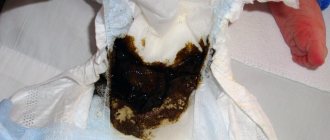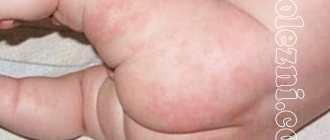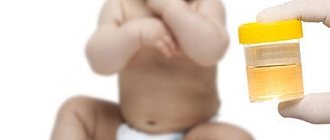Characteristic features of artificial chairs
In children who are bottle-fed, the stool differs in color, consistency, and regularity of bowel movements. This is due to the fact that the functioning of the intestines changes. Instead of the usual mother's milk, the baby takes an adapted formula every day.
Formula milk is much less digestible by the immature digestive system than breast milk.
Characteristic features of stool in breastfed children:
- Thick and homogeneous feces with yellow and brown tints are usually observed when artificial infants have liquid feces;
- Infants who consume formula milk are susceptible to frequent constipation, as they have bowel movements once every two days, and sometimes less often.

Artificial formulas are far from the composition of breast milk. Therefore, they may not always be suitable for a child’s body.
How to distinguish normal stool from diarrhea in a baby?
It would seem that the definition of diarrhea is quite simple - it is frequent loose stools. In fact, diarrhea in a child under one year old, especially in the first 6 months, cannot be identified immediately. A child’s stool at this age, especially if the baby is breastfed, normally has a very soft, even watery, mushy consistency, which is why some inexperienced parents may begin to sound the alarm.
In reality, the frequency and appearance of a child’s stool changes throughout the first year of life, and normal variations may be as follows:
- in the first month of life, the child may have stool after each feeding, that is, up to 8 times a day. At the same time, it is rich yellow in color, may be a little liquid or resemble gruel with a sour milk smell. Do not be alarmed if the newborn’s stool contains whitish lumps or a small amount of mucus: the baby’s stomach and intestines are adjusting - this is quite normal;
- from 2 months, the frequency of stool in the child decreases. The baby can have bowel movements up to 5 times a day, the appearance and smell of stool normally remain the same;
- From the age of 3 months, the baby has stools 1-2 times a day, becomes a little thicker, acquires a uniform consistency and a darker color.
As complementary foods are introduced and the baby becomes familiar with new foods, the baby's stool will continue to change, becoming darker and denser, and acquiring a different smell.
It should be noted that the stool of bottle-fed babies is normally denser and thicker, has a very light yellowish or brown tint and a specific smell.
What does diarrhea look like in a baby?
- very frequent watery stools;
- Strong smell;
- color change (greenish, unpleasant brown);
- stool contains foreign inclusions: pus, blood, large amounts of mucus, particles of undigested food;
- redness, irritation, rash on the skin around the baby's anus.
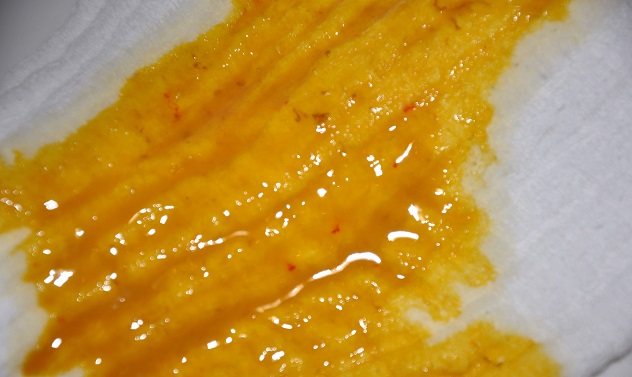
Diarrhea in a baby - photo
When is green stool in an artificial baby considered normal?
There is a certain period when the dark green stool of a baby with a dark tint should not cause concern. This is a natural process that lasts approximately five days after birth. The body is thus freed from amniotic fluid, epithelial tissue and other things. Gradually, the color of the baby’s stool changes:
- white undigested particles of the mixture are found in the stool;
- The color of the stool first becomes yellow-green, then changes to yellow or mustard.
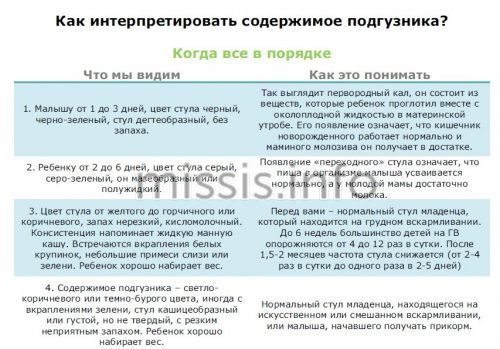
However, there are times when the color of the baby's stool remains green. If there is mucus in it, then this indicates that the digestive system is not fully formed. And in order for food to be properly digested, it lacks certain enzymes and beneficial bacteria. Green feces in a formula-fed baby may be the body’s reaction to a product consumed with a high iron content or a side effect from taking medications (for example, antibiotics).
Normal stool in IV and signs of digestive disorders
To identify diarrhea in an infant and recognize the onset of pathology in time, you need to understand what baby feces look like normally. A small child's stool is loose and unformed compared to an adult. However, bottle feeding makes the stool harder. Normal color is yellow or orange. The consistency should be porridge-like, without lumps or undigested particles. After the introduction of complementary foods, the stool becomes more formed.
It is the stool that is an indicator of the baby’s health and the normal functioning of the digestive system. Severe diarrhea in a formula-fed newborn may be a sign of a dangerous disease or infection, so his condition needs to be monitored.
The following signs will help identify diarrhea in a child:
- Stool becomes more frequent. The frequency of bowel movements varies. Children can go to the toilet 1 time or 4 times a day. For a baby, both are normal. If the frequency of bowel movements is more than 5 times per day, indigestion may be suspected.
- The consistency becomes more liquid. Diarrhea is usually watery and can be completely absorbed by the diaper. There is also foamy stool, which is a pathology.
- The color of stool changes. A deviation from the norm is considered to be either too light or dark color of feces. A greenish tint indicates dysbiosis, inflammation, and other intestinal disorders. A light shade may indicate liver problems, while a black shade may indicate the presence of coagulated blood in the stool.
- An uncharacteristic odor appears. Mothers usually notice that an unusual smell has appeared, for example, putrid, pungent, unpleasant.
Diarrhea itself is dangerous for a newborn baby, as it leads to dehydration. It is worth contacting a pediatrician if the baby’s fontanel has sunk in, he has become more lethargic, sleepy, loses weight, and urination has become rare. When dehydrated, the amount of urine produced is greatly reduced.
While the child is small and cannot complain about his condition, it is important to monitor his stool, the presence of blood or undigested food in it.
Symptoms of an unhealthy baby
If a child has green bowel movements, but is active, feels great, has a good appetite and sleeps healthy, then there is no need to worry or worry too much. But if green stool is accompanied by symptoms that are not typical for a healthy child, then this is a reason to think about his condition and visit a pediatrician as soon as possible:
- a rash appears on the baby’s body, which can be in one area or spread throughout the body;
- crying for no reason, restless sleep;
- nausea, vomiting, abdominal pain (the child constantly presses his legs to his stomach);
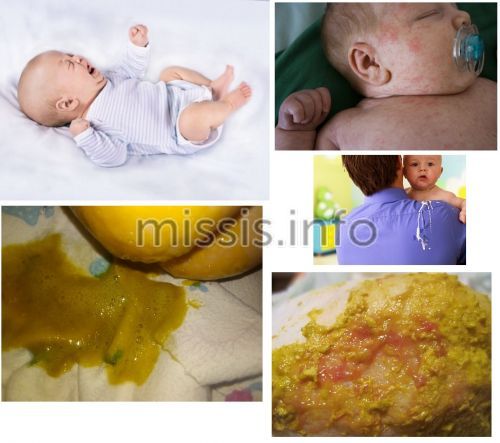
- vomits for a long time after eating food;
- feces are foamy, have a pungent odor and a liquid consistency;
- stool with black or red spots.
An unpleasant smell of stool may indicate an internal inflammatory process, and blood impurities may indicate internal bleeding. In any case, if a child has at least one symptom, it is necessary to contact a pediatrician.
Serious causes of green stool
The appearance of green stool in a baby can pose a great threat to his health and indicate the presence of a number of pathological changes in the body:
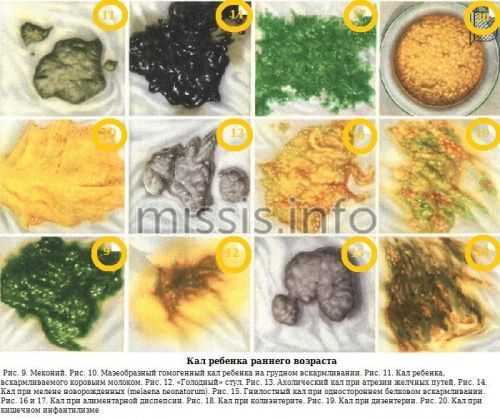
- dysbacteriosis;
- fungal infections, rotaviruses, enteroviruses;
- congenital disorders of the digestive system;
- weakened immune system;
- lactose deficiency;
- allergic reaction to the mixture or its individual components;
- enterocolitis.
After analyzing the presence of symptoms in a child, you should immediately decide on his treatment. However, only a pediatrician can prescribe adequate and effective therapy.
What should parents do?
The smartest decision for every parent would be to go to the doctor. If a child has a fever and severe diarrhea, then urgently call an ambulance, which will take you and the baby to a specialized medical facility.
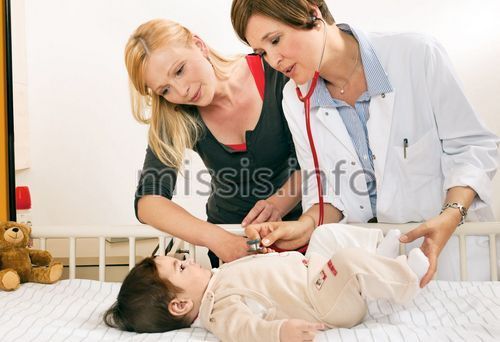
You should not refuse hospitalization. In the hospital, the child will be provided with qualified first aid and tests will be taken to determine the cause of the severe symptoms.
In the absence of fever and pronounced symptoms, the child should be shown to a pediatrician.
The specialist will order the necessary tests, which will give a complete picture of his health:
| Analysis | What does it reveal? |
| Scatology | Determines the factors of a disturbed gastrointestinal tract, identifies various types of infections. |
| Bakposev | Helps to obtain a characteristic of the general condition of the intestinal microflora. |
| Urine and blood analysis | Deviation from the norm indicates a specific disease. |
Thanks to diagnosis, the doctor will be able to prescribe effective treatment for the baby.

Often, to normalize the functioning of the gastrointestinal tract, infants are prescribed dietary supplements (biological food additives) with probiotics and prebiotics (Linox, Acipol, Lactobacterin), which favor the proliferation of beneficial bacteria in the body.
Green stool in a newborn is an indicator of physiological processes
It is extremely rare that this phenomenon poses a threat to the health of the child. More often, the reason for this is normal physiological processes in the body, which do not pose a danger to the development of the baby. In the first days after birth, green stool in a newborn is considered the absolute norm; it is caused by the presence of meconium and amniotic fluid. Already after three days, changes in stool are noticeable. The period of normalization of the intestines occurs in stages. First, the presence of particles of undigested milk or mixture in the stool is observed. Next, the color of the stool gradually begins to change from green to yellow-green. And finally, towards the end of the month, the newborn has yellow stools with a thick, mushy consistency.
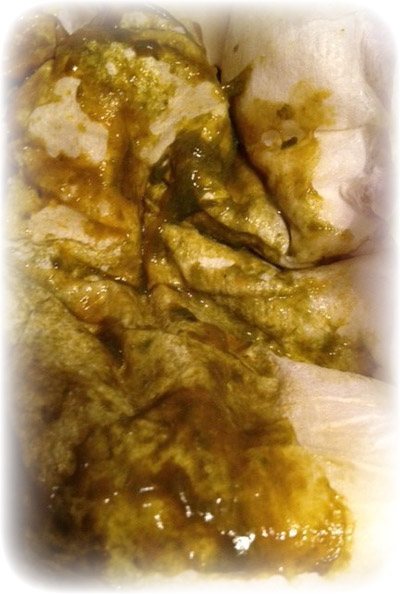
Green stool may be a deviation from the norm. One of the most common abnormalities of this kind, manifested by such bowel movements, is temporary dysfunction of the intestines. It is most often associated with the immaturity of the intestinal system. And the release of bilirubin from the body during the first three weeks of life can also be characterized by stools of this color and slightly darker.
Diet is of particular importance in this pressing issue. The color and consistency of the newborn’s stool directly depends on it. Breastfeeding differs from artificial nutrition in the presence of hormones, which have a direct effect on the external signs of feces, and in the variability of the foods consumed. Artificial feeding should be selected together with your pediatrician.
We open the question: What to do? The child refused complementary feeding
Green stool in a bottle-fed baby may appear due to the consumption of mixtures with a high iron content. Feeding for the first time also affects the color of stool. Another reason for green stool in a baby who has been bottle-fed for up to six months is teething.
How to treat a child?
All measures that the doctor will take depend on the test results:
- If the cause of the child’s poor health is an unsuitable formula for feeding, then replacing it will solve the problem. Today, the market for mixtures is replete with a variety of prices and quality. Therefore, choosing the best option for your child will not be difficult.
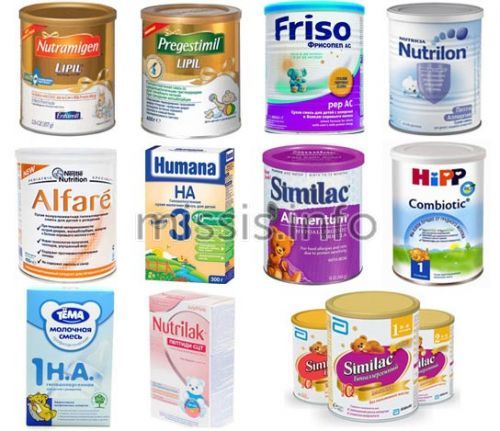
- Problems with stool caused by the use of medication can be successfully resolved by stopping the medication. For example, antibiotics destroy the intestinal microflora, which is why, after finishing taking them, you should take a course of probiotics.

- The doctor will treat the identified infectious, viral or bacterial disease on an individual basis. Based on the test results, the pediatrician will prescribe effective treatment for the small patient.
The child’s nutrition is of great importance in this matter. It is advisable to transfer him to at least mixed feeding, if possible.
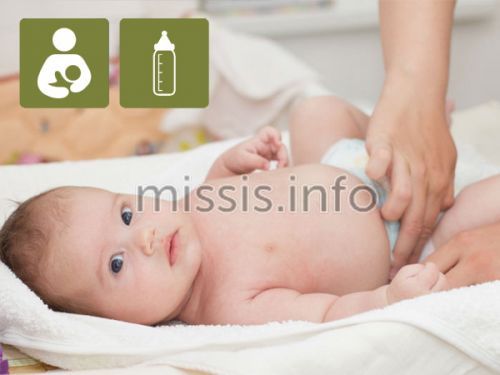
The baby should be fed frequently (every 2-3 hours), but the portions should be small, and do not forget to give plenty of fluids to drink.

